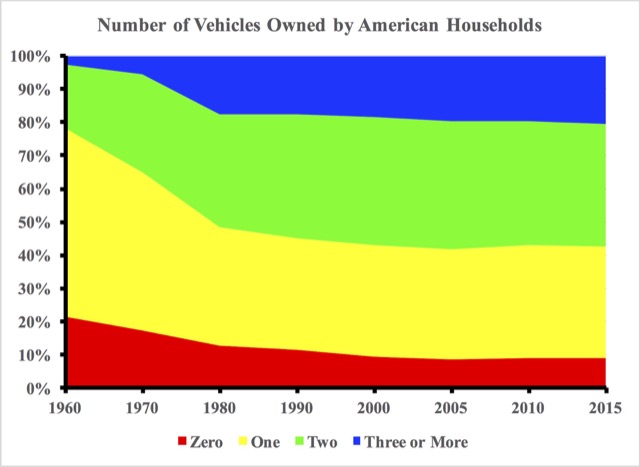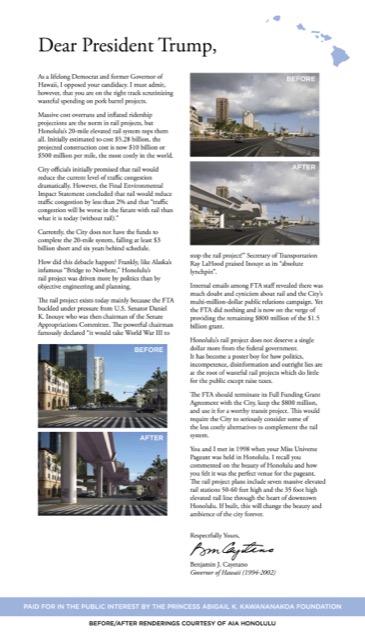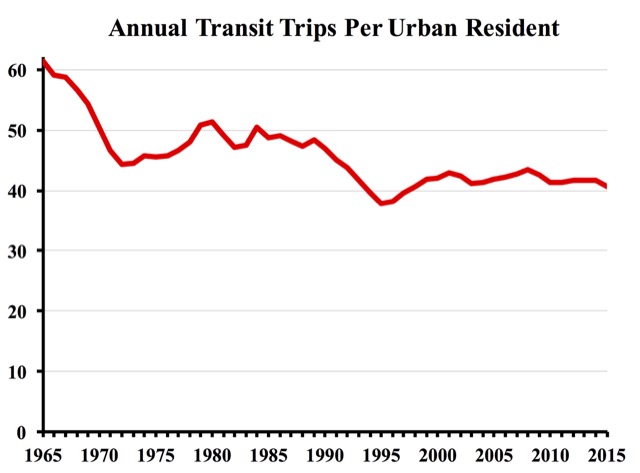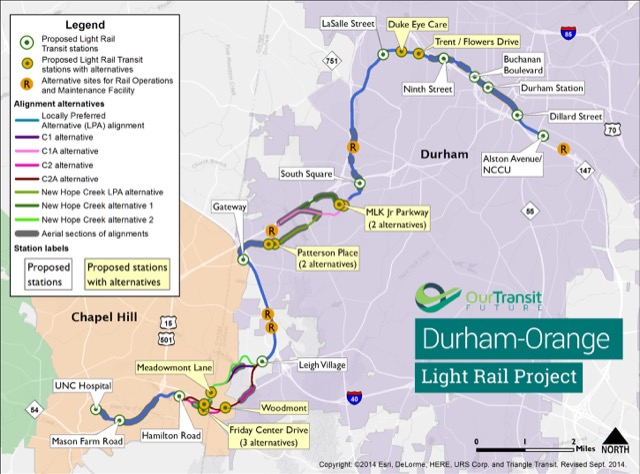Public transit helps the poor, saves energy, and cleans the air, right? Not really. Transit is a subsidy to the wealthy as much as it is to the poor, and it really isn’t any greener than driving.
Some low-income people ride transit, but the people most likely to use transit to get to work are those who earn $75,000 and up. According to table B08119 of the Census Bureau’s 2015 American Community Survey, 6.6 percent of people who earn $75,000 and up take transit to work, as opposed to just 6.2 percent of people who earn $15,000 or less.
Nor is transit particularly green, at least, not according to the Department of Energy’s Transportation Energy Data Book. The average car uses about 3,100 BTUs per passenger mile while the average SUV uses about 3,500. By comparison, transit buses and light rail average about 3,800. While heavy rail averages just 2,150 BTUs per passenger mile, that is heavily weight by New York City. Outside of New York, the only heavy-rail lines more energy efficient than cars are in San Francisco and Atlanta. By operating mainly during rush hours, commuter rail does okay at 2,700 BTUs, but many commuter lines, including those in Dallas, Minneapolis, Nashville, and Philadelphia, are worse than driving. Continue reading











